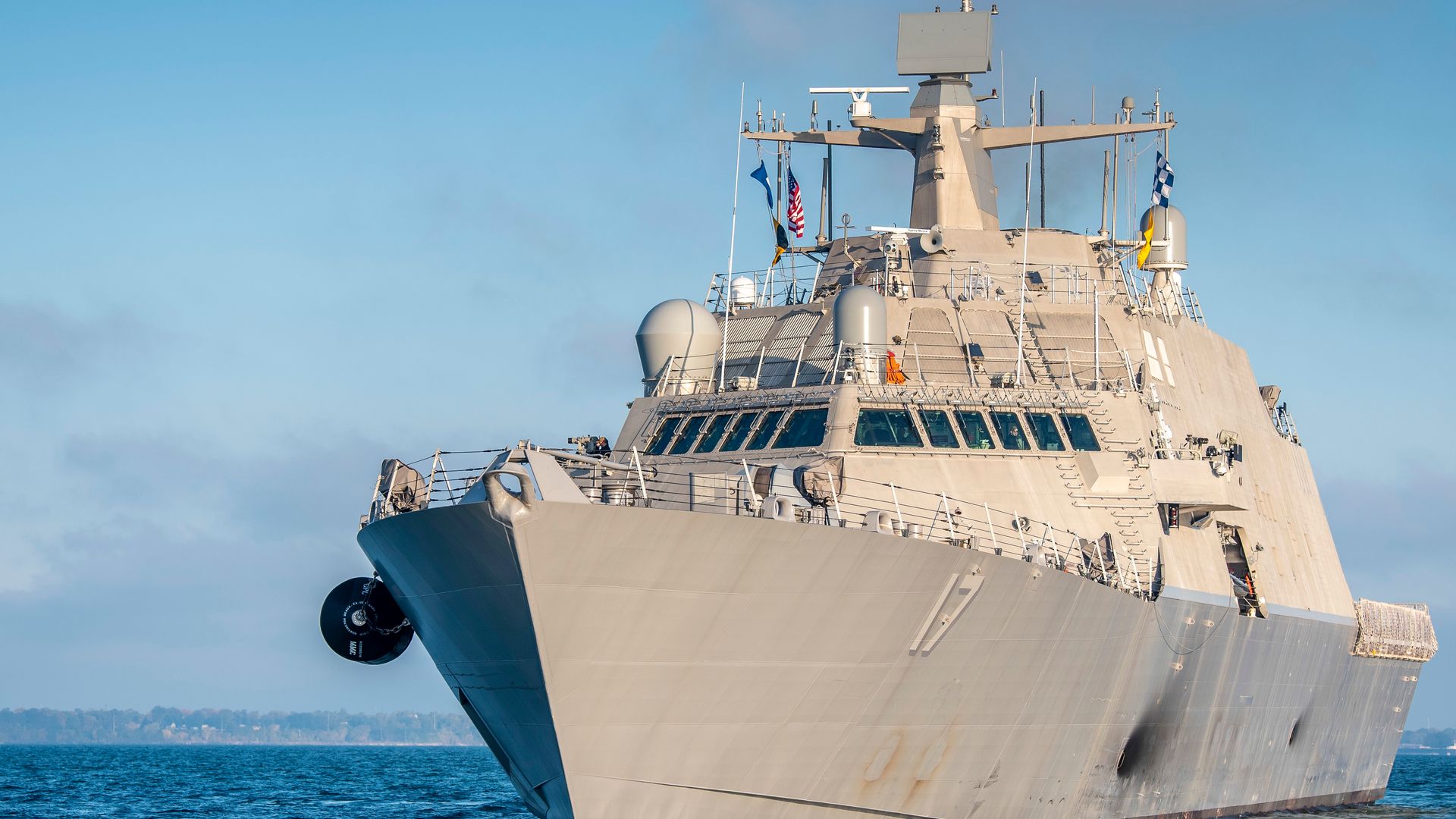
[Ryan Robertson]
SOME U.S. NAVY WARSHIPS ARE GETTING ANOTHER OPTION TO COUNTER UNMANNED AIRCRAFT SYSTEMS, OR DRONES. AND THE BEST PART IS IT DIDN’T COST THE TAXPAYERS TENS OF MILLIONS OF DOLLARS OR TAKE A DECADE TO DEVELOP.
IN FACT, THE USS INDIANAPOLIS GOT THE UPGRADE WHILE IT WAS DEPLOYED TO THE RED SEA AREA OF OPERATION LAST FALL. THE NAVY SAYS IT UPGRADED THE HARDWARE AND SOFTWARE ON THE FREEDOM CLASS LITTORAL COMBAT SHIP’S SURFACE-TO-SURFACE MISSILE MODULE–OR SSMM.
TRANSLATION: ONE OF THE LAUNCHERS ON THE SHIPS THAT SHOOTS MISSILES AT STUFF ON THE WATER OR ON LAND, CAN NOW SHOOT STUFF IN THE SKY. THE NEW AUGMENTED CAPABILITY IS A DIRECT RESULT OF ALL THOSE HOUTHI DRONES LAUNCHED AT SHIPS, HELICOPTERS AND OTHER TARGETS IN AND AROUND THE RED SEA.
THE SSMM IS ONE OF THREE MISSION MODULES THAT MAKE UP A LITTORAL COMBAT SHIPS SURFACE WARFARE MISSION PACKAGE. IT HOLDS UP TO 24 VERTICALLY LAUNCHED LONGBOW HELLFIRE MISSILES, AND WAS ORIGINALLY DESIGNED TO COUNTER SMALLER, FAST MOVING SURFACE VESSELS. LIKE THE EXPLOSIVE LADEN KAMIKAZE SPEED BOATS USED BY THE HOUTHIS IN THE RED SEA OR UKRAINE IN THE BLACK SEA.
WHILE SURFACE THREATS ARE STILL VERY MUCH A REALITY, THE NAVY NEEDED ITS MUCH MALIGNED LITTORAL COMBAT SHIPS TO DO MORE. SO IN 2022, SSMMs WERE MODIFIED TO ALLOW THEIR LONGBOW HELLFIRES TO HIT LAND-BASED TARGETS. TWO YEARS LATER, AND THE SSMMs CAN NOW HIT THINGS IN THREE DOMAINS.
HELLFIRES ARE IN WIDE USE THROUGHOUT THE MILITARY. MOST VARIANTS ARE GUIDED BY LASERS, BUT LONGBOWS ACTUALLY USE RADAR. THAT MAKES THEM MORE OF A FIRE AND FORGET WEAPON.
ONCE LAUNCHED, THE MISSILE GETS ITS TARGET FROM THE SHIPS RADAR, AND THEN THE MUNITION’S ONBOARD SEEKER LOCKS ON AND DELIVERS ITS PAYLOAD OF FREEDOM AUTONOMOUSLY. WHEN AIR LAUNCHED, LONGBOWS HAVE A REPORTED RANGE AROUND FIVE MILES. NO WORD ON WHAT A LONGBOW’S SURFACE LAUNCHED RANGE IS.
THE USS INDIANAPOLIS IS THE FIRST FREEDOM CLASS LCS TO RECEIVE THE COUNTER-DRONE ENHANCEMENT, BUT IT’S UNCLEAR HOW MANY OF THE OTHER NINE FREEDOM CLASS SHIPS IN THE NAVY’S FLEET WILL GET THE NEW UPGRADE, OR IF IT WILL BE APPLIED TO THE INDEPENDENCE CLASS LITTORAL COMBAT SHIPS.
FOR MORE UNBIASED, STRAIGHT FACT UPDATES ABOUT THE U.S. NAVY AND OTHER MILITARY MATTERS DOWNLOAD THE STRAIGHT ARROW NEWS APP TODAY.











